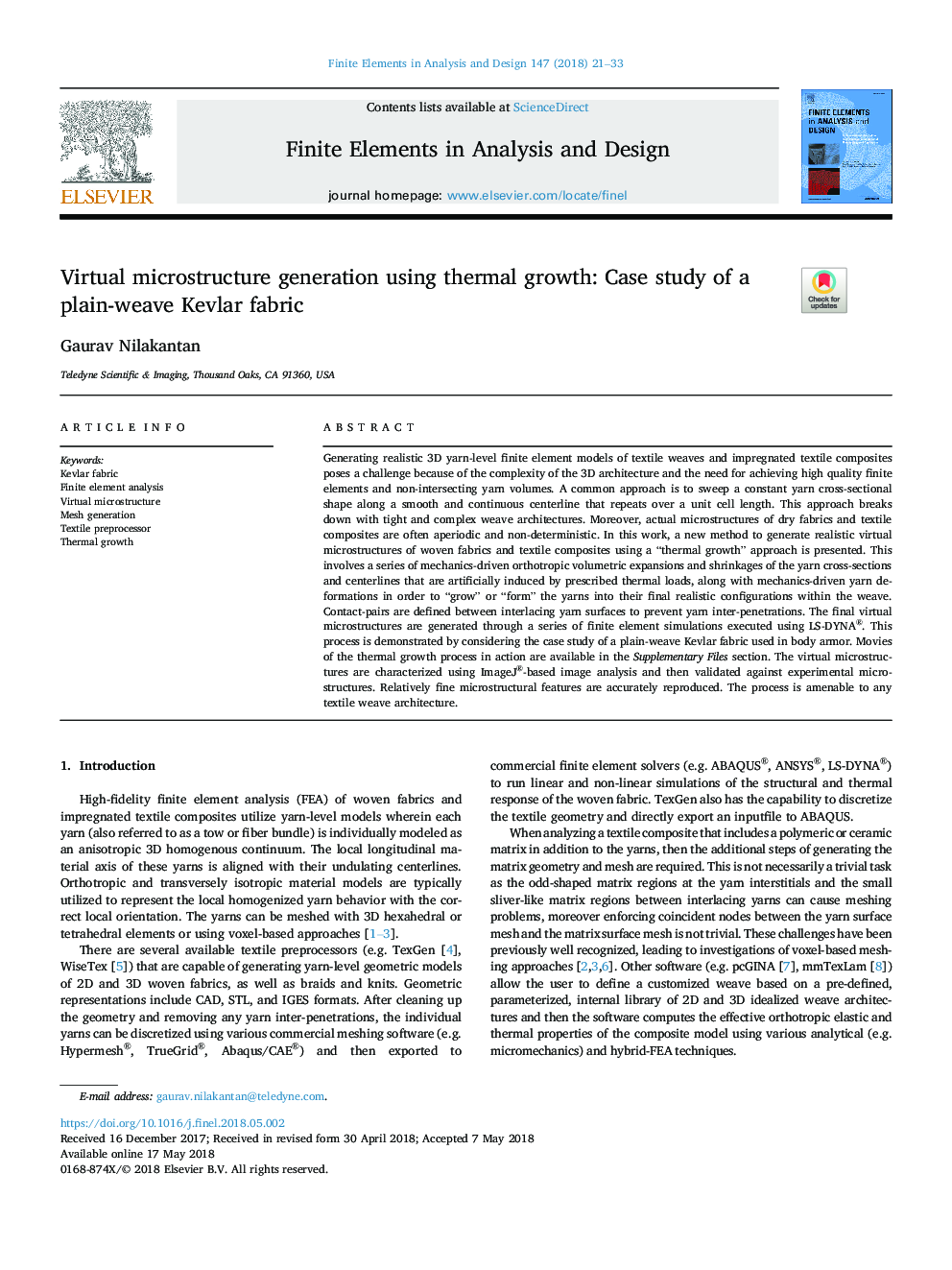| کد مقاله | کد نشریه | سال انتشار | مقاله انگلیسی | نسخه تمام متن |
|---|---|---|---|---|
| 6925267 | 1448752 | 2018 | 13 صفحه PDF | دانلود رایگان |
عنوان انگلیسی مقاله ISI
Virtual microstructure generation using thermal growth: Case study of a plain-weave Kevlar fabric
ترجمه فارسی عنوان
تولید میکرواستاتیک مجازی با استفاده از رشد حرارتی: مطالعه موردی یک پارچه کولار ساده بافت
دانلود مقاله + سفارش ترجمه
دانلود مقاله ISI انگلیسی
رایگان برای ایرانیان
کلمات کلیدی
پارچه کوالار، تجزیه و تحلیل عنصر محدود، ریز ساختار مجازی نسل مش، پیش پردازنده نساجی، رشد حرارتی،
موضوعات مرتبط
مهندسی و علوم پایه
مهندسی کامپیوتر
نرم افزارهای علوم کامپیوتر
چکیده انگلیسی
Generating realistic 3D yarn-level finite element models of textile weaves and impregnated textile composites poses a challenge because of the complexity of the 3D architecture and the need for achieving high quality finite elements and non-intersecting yarn volumes. A common approach is to sweep a constant yarn cross-sectional shape along a smooth and continuous centerline that repeats over a unit cell length. This approach breaks down with tight and complex weave architectures. Moreover, actual microstructures of dry fabrics and textile composites are often aperiodic and non-deterministic. In this work, a new method to generate realistic virtual microstructures of woven fabrics and textile composites using a “thermal growth” approach is presented. This involves a series of mechanics-driven orthotropic volumetric expansions and shrinkages of the yarn cross-sections and centerlines that are artificially induced by prescribed thermal loads, along with mechanics-driven yarn deformations in order to “grow” or “form” the yarns into their final realistic configurations within the weave. Contact-pairs are defined between interlacing yarn surfaces to prevent yarn inter-penetrations. The final virtual microstructures are generated through a series of finite element simulations executed using LS-DYNA®. This process is demonstrated by considering the case study of a plain-weave Kevlar fabric used in body armor. Movies of the thermal growth process in action are available in the Supplementary Files section. The virtual microstructures are characterized using ImageJ®-based image analysis and then validated against experimental microstructures. Relatively fine microstructural features are accurately reproduced. The process is amenable to any textile weave architecture.
ناشر
Database: Elsevier - ScienceDirect (ساینس دایرکت)
Journal: Finite Elements in Analysis and Design - Volume 147, August 2018, Pages 21-33
Journal: Finite Elements in Analysis and Design - Volume 147, August 2018, Pages 21-33
نویسندگان
Gaurav Nilakantan,
